Living Data
Track changes Interactions 2018
Disclaimers, Copyrights and Citations
Index
2015
2016
2017
2018 (In progress)
Combining subjective responses and collective knowledge
PEDESTRIANS ON COUNTRY
How can interactive media be made for people
to relate Indigenous Cultural knowledge to Western science?
TEAM:
Cat Kutay, Engineer
Michael Lynch,eResearch Support Analyst
Lisa Roberts, Visual Artist/interactive author
This is a journal of how we are creating an interactive environment for people to learn from country through the languages of art and science. A digital puppet avataris being made to enable people to interact with and embody knowledge shared by Indigenous and non-Indigenous scientists, artists and other scholars.
The stories are in the land. We can use the puppet in the space without any links, then as the player moves, it gains stories on its points so it brings the meaning into its body. Then the stories will stay [within the puppet] as links.
Cat Kutay, June 1, 2018
2018-007-26. We test the interactive in the Data Arena at the University of Technology Sydney. Video: Sebastian Reategui
Sex begins Euphausia's journey (in the belly of a whale) from Antarctica to Norfolk Island. Lots to do on this still... as you can see, but looking good as a space for many stories to connect.
IN THE BEGINNING...
Euphausia superba's story relates to many stories of natural life cycles, and so we start with hers.
Euphausia superba (Antarctic krill) is conceived in Antarctic waters on the ocean floor.
Moving up, down and around the Southern Ocean, she survives several Antarctic winters.
She is eaten by a whale who swims around Australia through its creation stories,
and through art and scientific data. The whale gives birth in Norfolk Island,
and so begins a new oceanic cycle that sustains life on land.
Euphausia superba (Antarctic krill)
Euphausia is the Greek word for "true shining light" and my hope is that the individual and aggregating behaviours of krill cast light on the distinctive and collective capacities of humans to recognise, understand and mitigate harmful impacts on natural climate systems.
Lisa Roberts, July 7, 2018
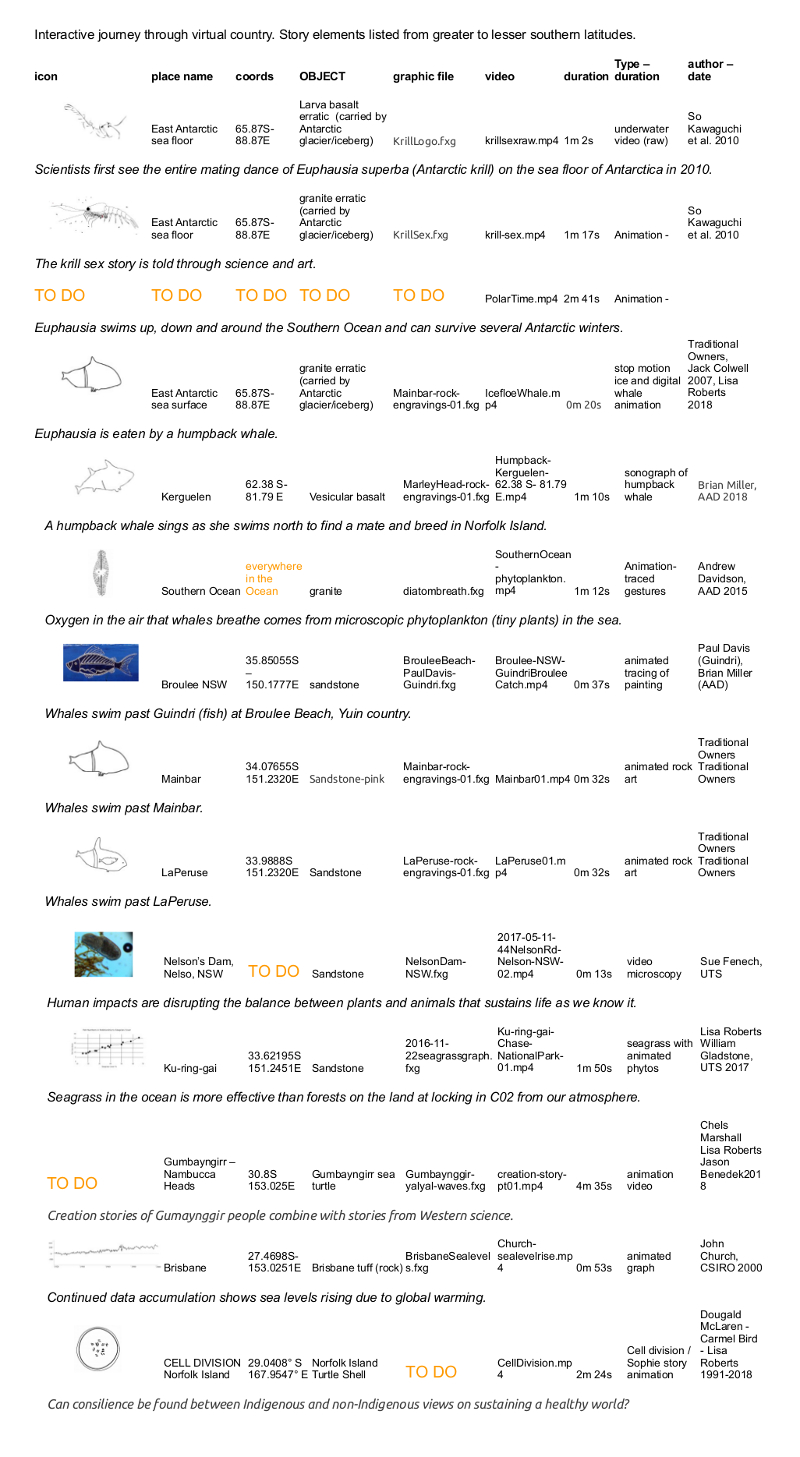
Spreadsheet of interactive story
that begins in Antarctica
with story elements listed
from greater to lesser southern latitudes.
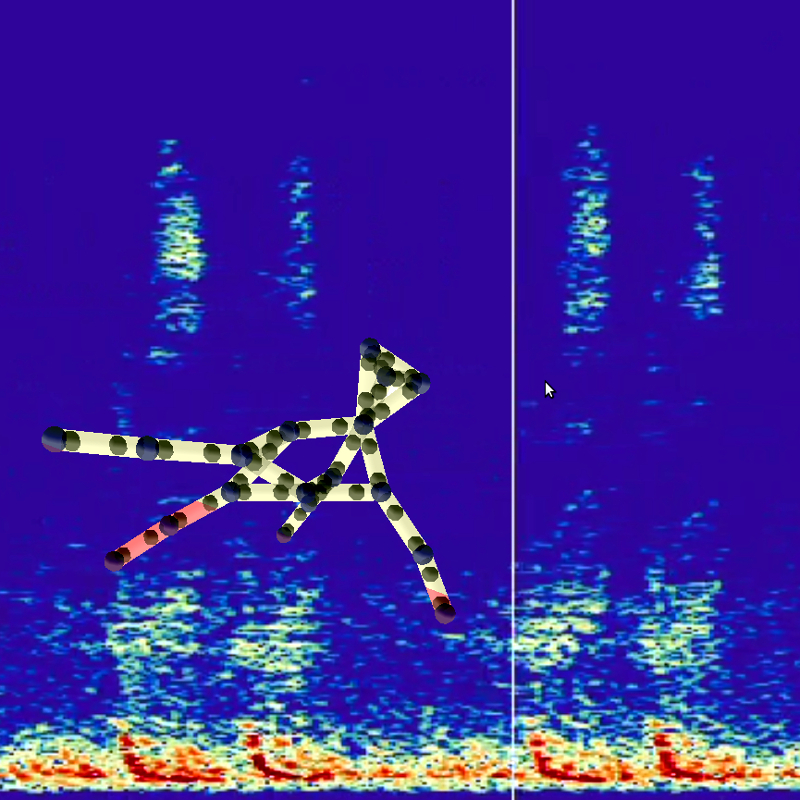
Minke whale sonagraph: Brian Miller,
Australian Antarctic Division
Pedestrian puppet: Mike Lynch with Lisa Roberts,
University of Technology Sydney
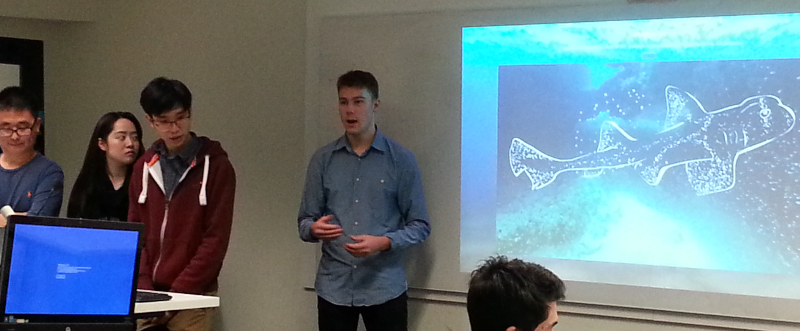
UTS Engineering student presentation
June 19, 2018
UTS Engineering student presentation
June 19, 2018
I meet with Cat and Michael during Hacky Hour at UTSto discuss the possibility of the puppet being a three-dimensional form. Michael writes the code and builds the 3D puppet. We agree that there's something more that can be done to make the form more lively but we're not sure what that might be. He then explores the idea of making its parts transparent, with animated 'microorganisms' within and around it's spherical joints and tubular connectors. As Mike codes I draw and we recognise similarities between the microscopic forms and the symbols used in Aboriginal visual language - circles, spirals and stars. We now see that this new puppet reflects the reality that we humans are part of the natural world in all its dimensions. I say to Mike that he's now making art. He laughs and suggests that what has happened here is 'Art House Coding'. This makes me think of something Cat had said to me earlier today, that laughing brings the knowledge and the story into our bodies and makes them memorable.
Lisa Roberts, June 14, 2018
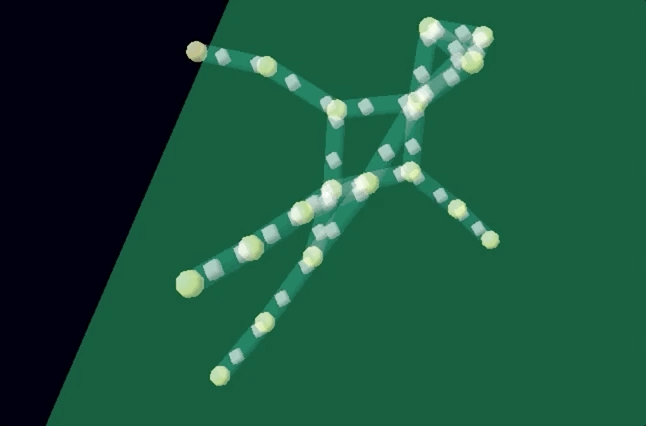
3D puppet by Michael Lynch
June 14, 2018
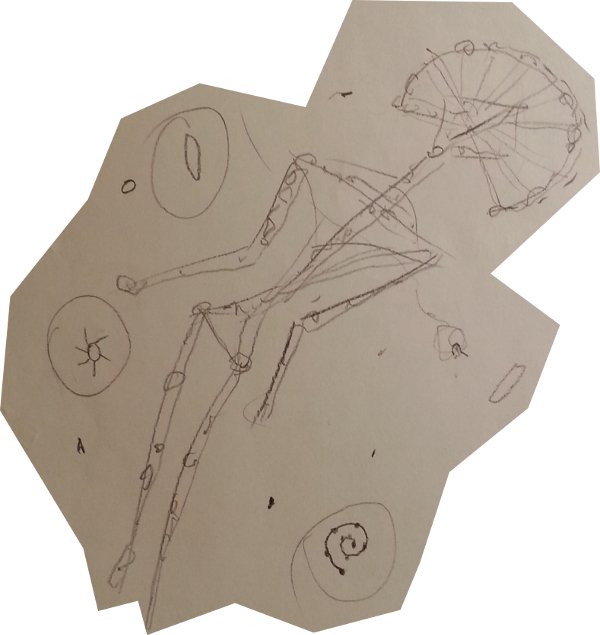
My drawing
June 14, 2018
Since ancient times, drawing, tracing, mimicking, music and dance have been performed to relate to, and remember, important stories passed down through generations, about how the world works and our relationship with it. These arts are still performed today, to deeply listen and tune in to each other and the natural world. Here digital interactive media are used to trace and dance as ways to process information passed down in words and gestures of Antarctic scientist Andrew Davidson,about connectivity between living things in the ocean that "set our planetary chemistry".
I manipulated BOP the digital puppetin real time in response to Andrew's (recorded and traced) voice and gestures explaining, "So... the organisms I work with are [phytoplankton]... they have a value in their own right...they are... as individuals they... can do some extraordinary things... but really the most important roles they play are... are when they are involved in... linking processes".
Lisa Roberts, May 31, 2018
Antarctic minke whale "bioduck" calls
Recorded on AAD moored acoustic recorder along the resupply route to Mawson Station in 2014.
Dataset: Kerguelen2014. Starting date and time of recording 2014-07-24 00:18.
Recorded and curated by Brian Miller, Australian Antarctic Division.
The recordings that I sent were made at two fixed long-term recording sites. The datasets are named for the sites, either 'Casey' or 'Kerguelen,' but the Kerguelen site is at the Southern tip of the Kerguelen Plateau rather than near the Isle Kerguelen.
Casey site is at 63.80 S, 111.75 E in decimal degrees.
Kerguelen site is at 62.38 S, 81.79 E in decimal degrees.
Brian Miller, May 30 2018
I draw and animate this whale engraving that I see on Marley Head, New South Whales. The original engraving was created by the original peoples of this place thousands of years ago. It was traced and re-traced by as part of ceremony until Europeans colonised and outlawed Indigenous cultural practices.
Lisa Roberts, May 31 2018











